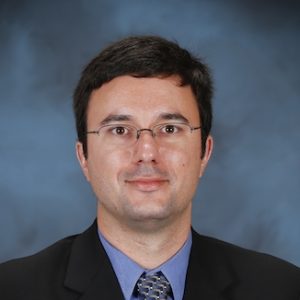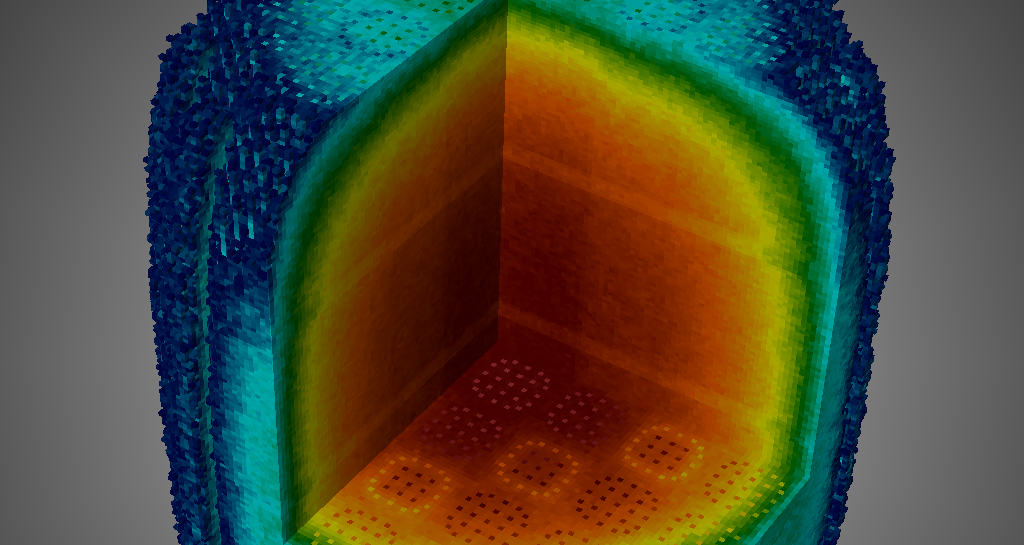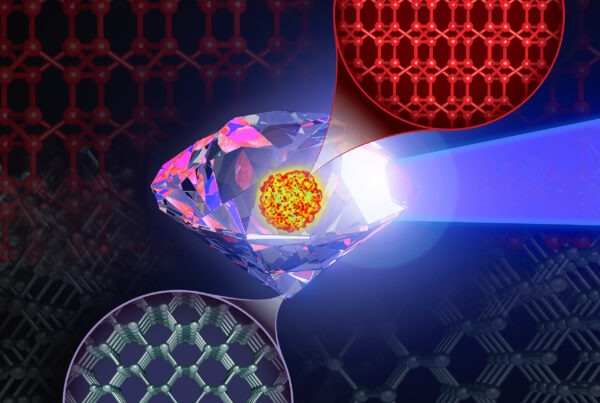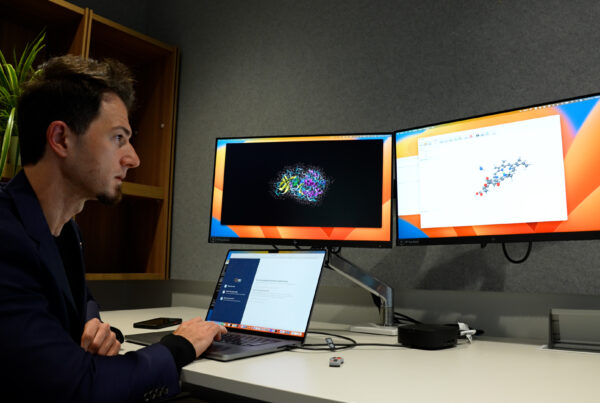Frontier is an exascale computer planned for delivery at the Oak Ridge Leadership Computing Facility in 2021. The system will support a wide range of scientific applications for advanced modeling and simulation, as well as high-performance data analytics and artificial intelligence. In the “Science at Exascale” Q&A series, researchers working on these next-generation scientific applications discuss what they hope to achieve on Frontier.
The Exascale Computing Project‘s (ECP’s) ExaSMR: Coupled Monte Carlo Neutronics and Fluid Flow Simulation of Small Modular Reactors focuses on improving the ability to accurately predict and analyze how nuclear reactors function to ensure their operation is safe, reliable, and economical. The project is particularly focused on a class of reactors known as small modular reactors (SMRs). Conventional nuclear reactors are usually limited to locations with large populations, but SMRs are customizable and could potentially provide rural areas with an efficient and affordable source of electricity.
With petascale systems like Summit, scientists can simulate how radiation particles disburse throughout a reactor at a specific point in time. These simulations provide useful insights into reactor behavior such as the amount and location of heat generation, as well as a way to test the viability of more advanced designs. The team expects to see even more efficient times to solution with Frontier, a US Department of Energy (DOE) exascale system scheduled to be delivered to DOE’s Oak Ridge National Laboratory (ORNL) in 2021.
To fill gaps in data collected from these types of simulations, the team plans to use Frontier to simulate the entire lifetime of a nuclear reactor at exascale, a feat that would show how materials in an SMR change over time, allowing scientists to extract more detailed information about the overall operational behavior of a reactor. Results from Frontier could inform the production and distribution of SMRs within the next decade.
 In this interview, Steven Hamilton, principal investigator of ExaSMR as part of ECP, describes how he will leverage Frontier’s compute power to simulate the lifetimes of these SMRs, which could lead to more efficient and affordable electricity.
In this interview, Steven Hamilton, principal investigator of ExaSMR as part of ECP, describes how he will leverage Frontier’s compute power to simulate the lifetimes of these SMRs, which could lead to more efficient and affordable electricity.
Can you provide an overview of the ExaSMR project?
Hamilton: Our application is aimed at performing simulations of small modular reactors, which are a class of nuclear reactors similar to existing designs that have a much smaller footprint, making it more economical to manufacture components for these devices and making it possible to construct them in rural locations that may not have a demand for large-scale reactors. The economic impact could be significant because we could potentially provide electricity produced by nuclear reactors to outlying areas that might currently be limited to a small subset of energy production options. It can take decades and billions of dollars to physically construct a test reactor, so what we’re trying to do is perform virtual experiments that will predict how different reactor designs would perform if they were to be built.
How have OLCF resources helped further this work?
Hamilton: Summit is definitely opening up new possibilities for us. On Titan, we were limited to performing simulations of the initial startup of a reactor, but with Summit we’re able to perform calculations at various points in a reactor’s lifetime. We’ve been able to do some of the largest Monte Carlo radiation transport calculations that have ever been performed, which means we’re able to more accurately predict certain quantities within an operating nuclear reactor.
What do you hope to achieve with exascale?
Hamilton: I think our primary goal on Frontier is to be able to perform calculations substantially faster, which allows us to achieve higher accuracy than we can on today’s machines like Summit. The hardware and algorithmic improvements on Summit have enabled us to run simulations about 40 times faster than we were able to on Titan, and our hope is that we will be able to run calculations at least a factor of 10 faster on Frontier than we currently can on Summit. We’re also really excited about having another GPU-based machine here at Oak Ridge. Over the past several years, we’ve spent a lot of effort optimizing our codes to make them run efficiently on GPU-based architectures, so we’re looking forward to continuing that trend with Frontier.
UT-Battelle LLC manages Oak Ridge National Laboratory for DOE’s Office of Science, the single largest supporter of basic research in the physical sciences in the United States. DOE’s Office of Science is working to address some of the most pressing challenges of our time. For more information, please visit https://science.energy.gov.






